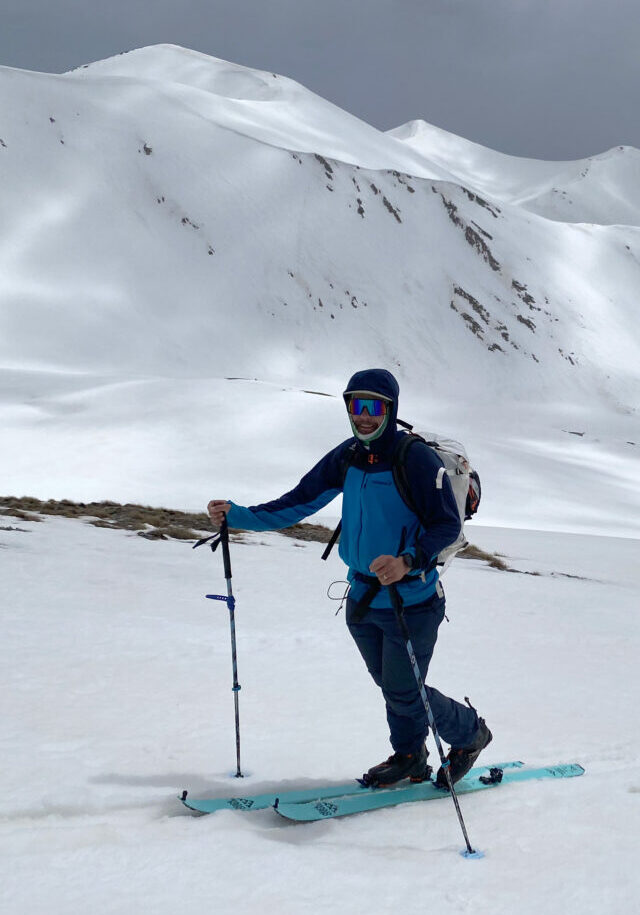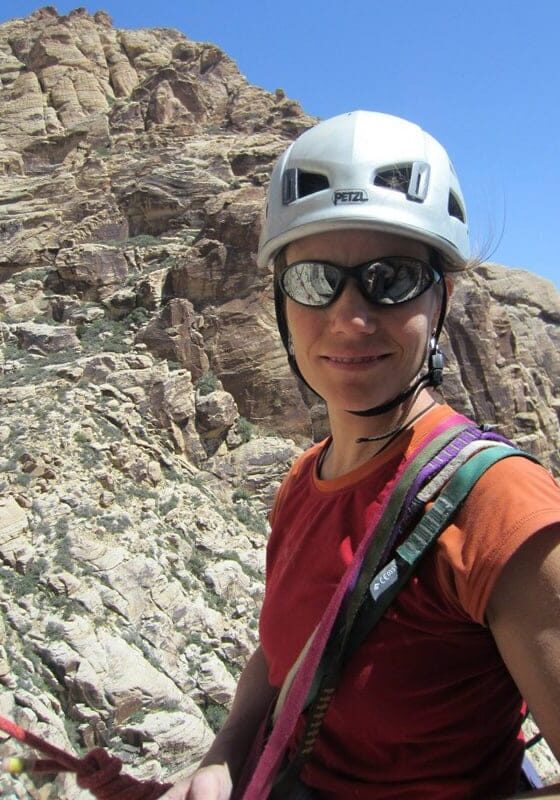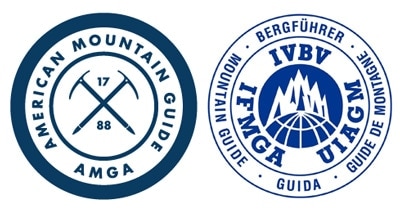Lion Head Winter Route
Overview by AMGA/IFMGA Mountain Guide Mark Synnott. Photo: Looking over towards Tuckerman Ravine and the Lion Head route on Mount Washington.
4.1 miles | 4,250' elevation gain
The standard route for ascending Mt. Washington in winter is the Lion Head winter route. Your day will start at the Pinkham Notch visitor center. Here you can pick up a weather and avalanche report, as well as a warm breakfast. There is a changing/staging area in the basement where you can use the bathroom, fill water bottles and get suited up for the day. The climb starts on the Tuckerman Ravine trail which climbs gradually for 1.7 miles, where it intersects with the Huntington Ravine Fire Road. The time from Pinkham to this intersection depends on your fitness. It’s important to check at Pinkham to make sure that the Lion Head winter route is open. The rangers don’t open it until there is enough snow to completely cover the ground. When the winter route is closed, continue up the Tuckerman Ravine trail to the Summer Route which branches off the main trail just below Hermit Lake, 2.3 miles from the trailhead.
For the winter route you will follow the Fire Road north towards the Harvard Cabin and Huntington Ravine. A few minutes after leaving the Tuckerman Ravine Trail you will arrive at the junction of the Lion Head Winter Route. On the opposite side of the trail there is a small wooden rescue cache containing a litter and avalanche probes. This is where most parties put on crampons and get out their ice axes, but there is also another spot where you can stop and do this a few minutes up the trail. Within a few minutes the trail rears up and gets extremely steep for a short section. There is even a small rock step. This short section is quite easy, but it does require using your hands and or axe for a few moves, and there are some real consequences if you did slip. I typically carry a 50-foot long piece of rope which I use on this section if it seems appropriate. After another half hour of steep uphill grinding, the trail emerges from the spruce onto a a broad wide open slope that leads up to the Lion Head which you’ll see as a small rock formation on the horizon.
The section from treeline up to the Lion Head is often icy and it’s here that you’ll usually get your first taste of the wind. It can blow pretty hard in this area, but not as hard as it will be up on the Lion Head, which is one of the windiest places on the mountain. Just below Lion Head the trail moves up through a steep, rocky section which is another spot where you really have to watch your footing. The moves are easy but the consequences of a fall are serious. On top of Lion Head you’ll get a view down into Tuckerman Ravine and if the weather is good you’ll have an unobstructed view of the summit. There is a flat area on top of Lion Head and it’s a nice place to take a break if the wind is not ripping. But in my experience it is almost always very windy at this spot in winter. If it is blowing hard and you need to stop, you can often find shelter in the lee below Lion Head.
I have found that success on a winter ascent has everything to do with two things: wind and visibility. To assess the prospects for summitting Mt. Washington on any winter day, I get on the Mt. Washington Observatory website: www.mountwashington.org. Here you can get a forecast for the weather and the wind. If it’s gusting anywhere above 60mph on the summit, you wil be in for a serious fight. You could still maybe make it if you are tough and dressed appropriately with a warm hat, neck warmer, face mask, goggles, and warm clothing and gloves. Keep in mind, though, that if you decide to go for the summit in high winds and something goes wrong (you sprain your ankle or get lost), you could end up another Mt. Washington statistic. Another thing that I’ve learned over the years up on Mt. Washington is that wind always feels much stronger than it actually is. Typically, if the wind is gusting to to 35 mph, people will think it is 50-60 mph. If it’s questionable, the smartest thing is to turn back and live to climb another day.
From Lion Head the trail moves along the northern lip of Tuckerman Ravine, across the alpine garden to the base of the summit cone. Beware that the trail in some spots runs right along the lip of the ravine. The trail is often bare ice in this area and it is possible to slip or have the wind blow you over the edge down into Tucks. Another thing to keep in mind as you’re moving across this section is that it is likely to be the windiest section of your climb. If the wind seems unmanageable, it might be worth it to continue across to the base of the cone, where often you wil find yourself in the lee, with little or no wind. If this is the case, you might as well continue, provided you can see the line of cairns heading diagonally to the west up the cone. Be forewarned, that in a snowstorm, the cairns can start to look a lot like boulders, and there are many stories of people who have wandered off the trail and become lost in the whiteout.
Your next landmark if you continue up is Split Rock, a truck sized boulder with a gap in the middle that you squeeze through. This is a spot where you can take another quick rest and regroup for the final push to the top. Usually it will take only about 15-20 minutes from the bottom of the end of the alpine garden to split rock. Above split rock the trail moves across talus and if there are no tracks to follow it can be difficult to keep on the trail. The trail traverses west until intersecting with the Davis Path, which comes in from the south. This is an easy place to make a wrong turn, either on the way up or the way down. When you get to the big cairn, the trail makes a hard turn to the right and follows cairns leading directly uphill more or less due north. Follow the cairns and in 30 minutes you should arrive at a junction with the autoroad. If the wind is from the west, northwest, as it usually it, this top section of the cone is often times in the lee. As you continue up the autoroad towards the summit, you will likely be walking back into the teeth of the wind. Don’t worry though, as from here it is only a few minutes to the top. Walk to the right (north) of the giant wooden staircase up the road, and then cross the tracks and the summit lies directly behind the biggest building, which is the main visitor center in the summer.
Most people who make it to the summit will go down the same way, but it is good to know that you can make a loop of sorts if you wanted to, by going down the Boott Spur trail. The trail skirts across the top of Tuckerman Ravine and Hillman’s Highway, and then follows a trail down the prominent spur between Tucks and the Gulf of Slides. Once you get below treeline you can take the Boott Spur Link trail to get back to Hermit Lake or you can continue all the way to Pinkham on the Boott Spur Trail, but keep in mind that it will take you significantly longer via this route. Of course it is also possible to reverse by taking Boott Spur to the summit and then come down via Lion Head.
Gear
- mountaineering boots
- lightweight crampons
- lightweight 50-60cm mountaineering axe
- collapsible ski pole
- face mask, neck warmer, & balaclava
- goggles
- 2 pairs of gloves
- food, water, & thermos
- cell phone
- map & compass
- first-aid kit
Ready for the Lion Head Winter Route?
Sign up for one of our most popular trips, the one day Mount Washington Winter Ascent...

















